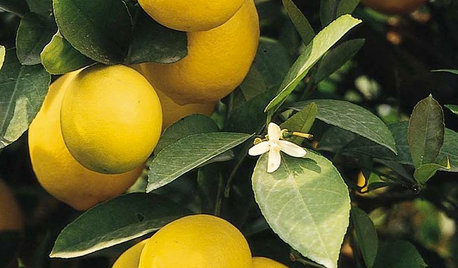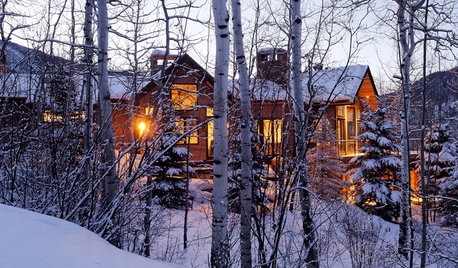Anyone in San Diego have any luck with Red Perilla/shiso?
HeyJude2012
10 years ago
Related Stories

CALIFORNIA GARDENINGCalifornia Gardener's February Checklist
Celebrate 5 California classics: plants that defy winter with bright flowers, luscious fragrance and, for some, delicious taste
Full Story
COLORCooking With Color: When to Use Gray in the Kitchen
Try out Trout or shake up some Martini Shaker gray for a neutral-based kitchen that whispers of sophistication
Full Story
REMODELING GUIDESYour Floor: An Introduction to Solid-Plank Wood Floors
Get the Pros and Cons of Oak, Ash, Pine, Maple and Solid Bamboo
Full Story
GARDENING GUIDESBackyard Birds: Invite Entertaining Hummingbirds Into Your Garden
Hummingbirds — unique to the Americas — zip through open landscapes seasonally or year-round. Here’s how to attract them
Full Story
GARDENING GUIDESGet on a Composting Kick (Hello, Free Fertilizer!)
Quit shelling out for pricey substitutes that aren’t even as good. Here’s how to give your soil the best while lightening your trash load
Full Story
MOST POPULARThe Unexpected Color That Goes With Everything
Move over, beige. Green is staking its claim as the freshest neutral around
Full Story
LIFEHouzz Call: Who'll Post the First Snow Photo of 2013?
If the weather's been flaky in your neck of the woods, please show us — and share how you stay warm at home
Full Story
ARTFrom the Artist: How to Make a Real Mobile
It’s all in the balancing points: A top mobile designer shows how to create a Calder-inspired installation of your own
Full Story
MOST POPULARThe Most Popular Kitchen Storage Ideas of 2014
Of all the kitchen storage photos uploaded to Houzz this year, these 14 were tops. Which will you save to your kitchen ideabook?
Full Story
VINTAGE STYLERevel in Retro With Vintage and New Kitchen Appliances
Give your kitchen old-fashioned charm with refrigerators and stoves that recall yesteryear — even if they were made just yesterday
Full Story





jean001a
HeyJude2012Original Author
Related Professionals
Arnold Landscape Architects & Landscape Designers · Garden City Landscape Architects & Landscape Designers · Kapaa Landscape Architects & Landscape Designers · Aurora Landscape Contractors · Bridgeview Landscape Contractors · Fort Myers Landscape Contractors · Mendota Heights Landscape Contractors · Natick Landscape Contractors · Pleasant Prairie Landscape Contractors · Ramsey Landscape Contractors · Shoreview Landscape Contractors · Crowley Landscape Contractors · Shenandoah Landscape Contractors · Arlington Roofing & Gutters · Brentwood Roofing & Guttersseysonn
HeyJude2012Original Author
yukkuri_kame
doginthegarden
yukkuri_kame
HeyJude2012Original Author
doginthegarden
avocado101
yukkuri_kame
river_city
yukkuri_kame
seysonn
jimster
yukkuri_kame
Yolanda